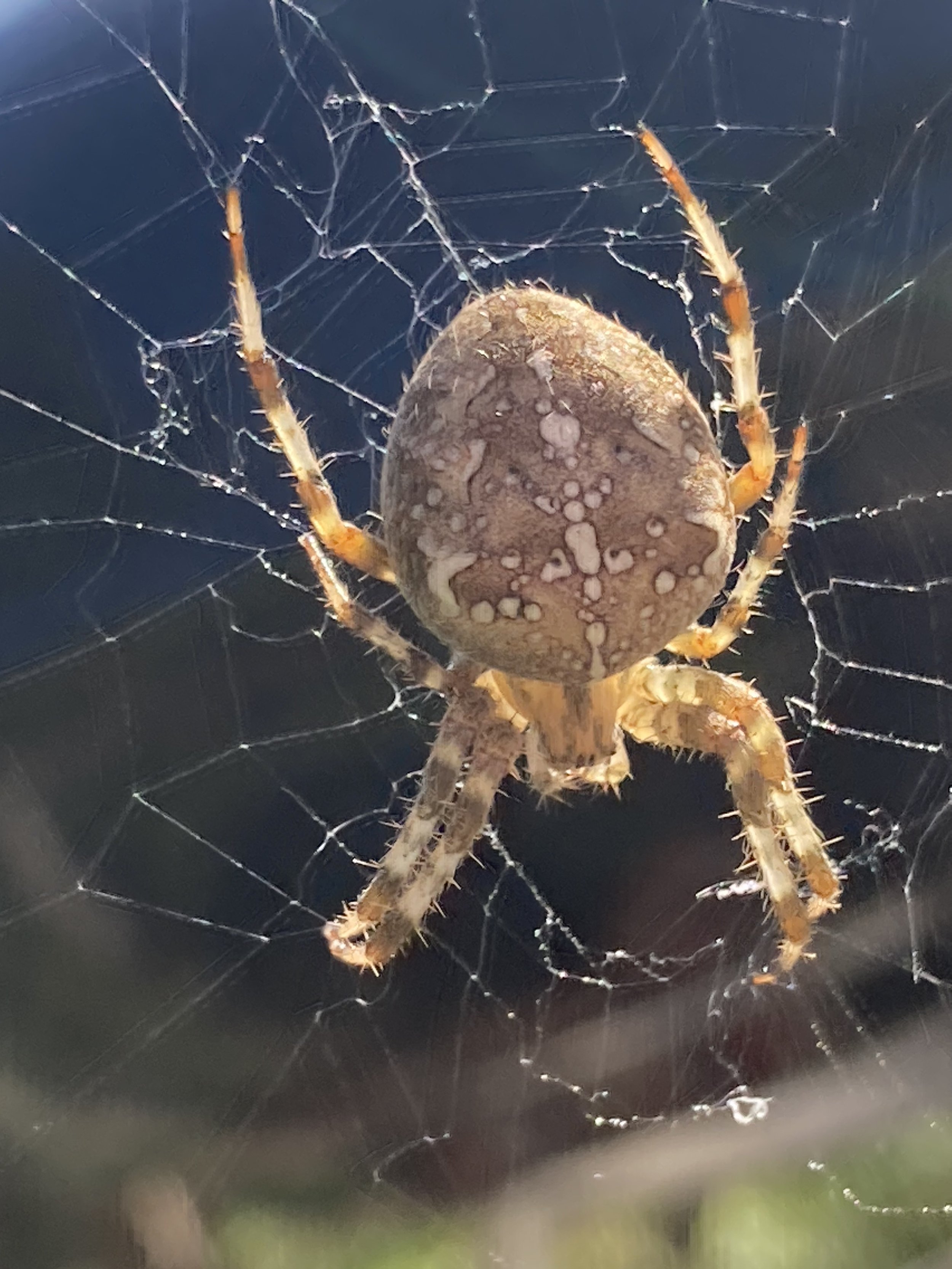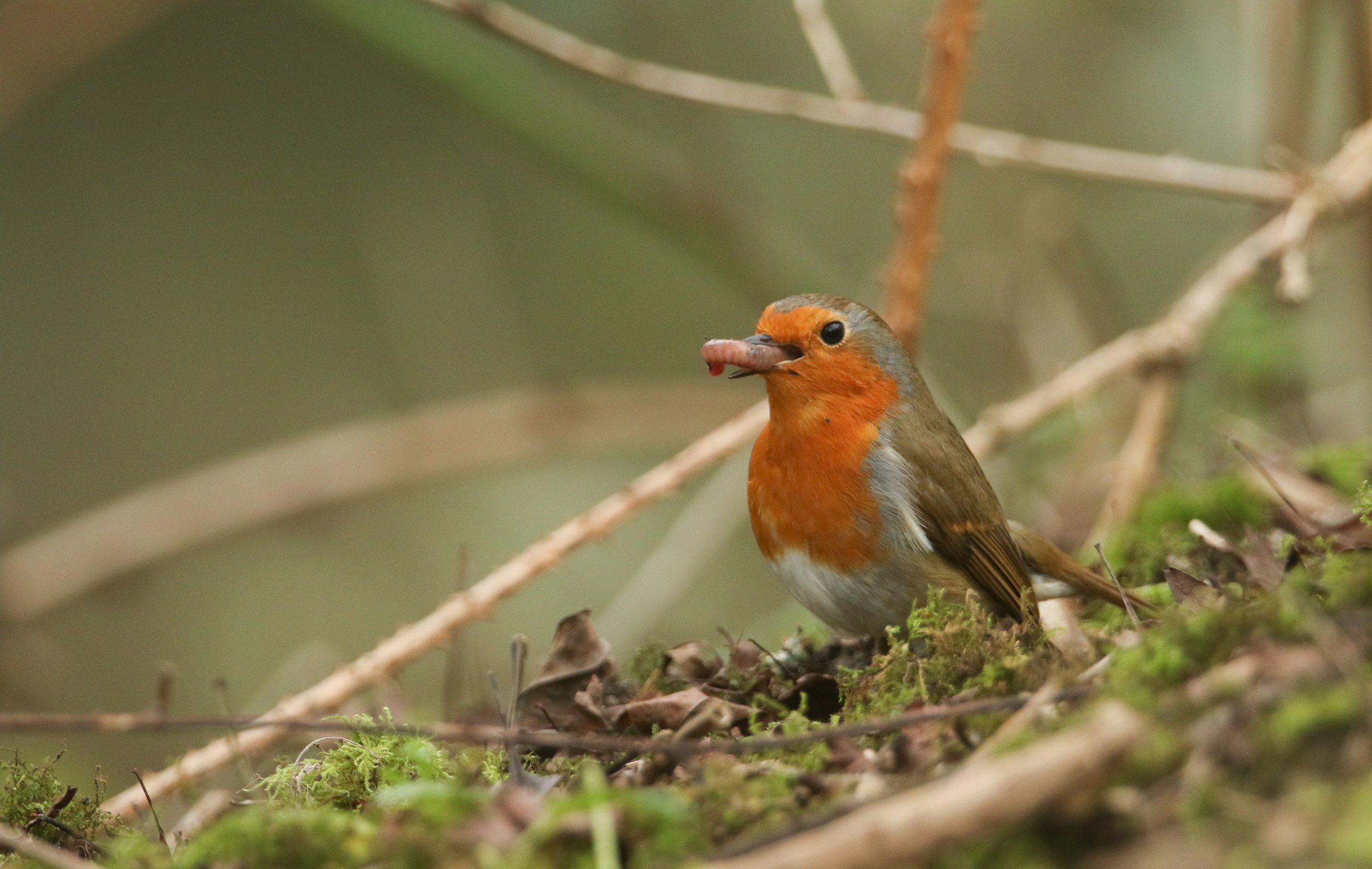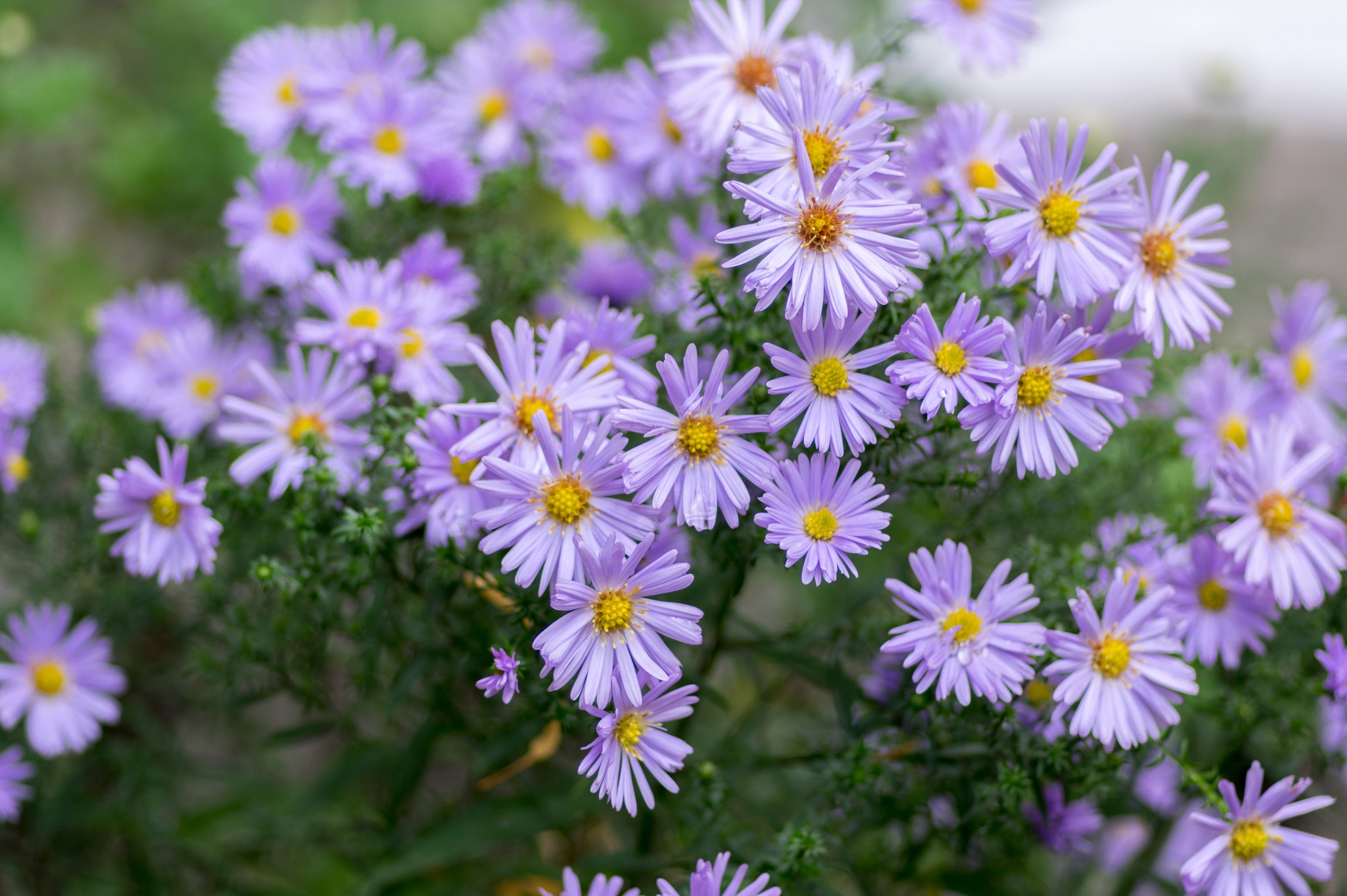October Newsletter
As it's nearly Halloween I’m going to be talking about some creepy crawlies in this newsletter!. First though, as we head towards the clocks going back at the weekend and everything feeling very autumnal there are still some flowers in bloom at Chalkhill. They are providing much needed nectar for the pollinators which are still active. Here’s are four of my favourites.
Spiders
We notice more spiders in Autumn when the males of many species reach adulthood and are actively looking for females to mate with.
Photo: A Garden spider at Chalkhill
Even if you don’t like spiders it’s hard not to admire this beauty. Garden spider or garden orb-weaver (Araneus diadematus) are common, and as the name suggests, often found in our gardens
They’re around from June and most often seen in September and October when they’ve reached full size. Females can be seen sitting in the middle of their large webs in gardens or across doors and windows. Males are often eaten by females after mating, while females die of starvation in late autumn as they won’t leave their eggs to hunt (for flies and even wasps). The young remain within the egg sac until hatching the following May.
Apples
I’ve just been to Middle Farm where I get some of our apples pressed into juice. We had a fairly poor harvest this year, though still managed to fill the freezer with litres of juice. Lots of the apples are very small and we’ve mainly been leaving them for the wildlife. Apples provide a valuable food supply for all sorts of animals, mammals like badgers, hedgehogs, wood mice and voles, and they are a source of late-season sugar for butterflies, wasps, ants and other invertebrates.
The apple trees at Chalkhill are pretty old, As they age, apple trees provide crevices and gnarly twigs ideal for nesting sites, insect homes and wildlife-attracting lichens. Sadly one of the small trees died over the summer. I’m going to leave it standing though as, for wildlife, standing decaying wood is very valuable. Hollow trunks, cracks in bark and rot holes support insects and provide nesting and roosting areas for birds and bats.
Old apple tree at Chalkhill
A Rewilding Gardeners Diary
I’ve been turning my thoughts to preparing my vegetable patch for the winter so its ready for next spring. I’m a big fan of Charles Dowding, who tells me it’s time to sow garlic (which I’ll try and do this weekend) and to put a layer of compost on my no dig beds. His website has really very helpful information on Using and making compost. I’ve been making my own compost for 2 or 3 years. I’m a bit erratic in my dedication if I’m honest, I’m sure I could do better. Each year though I do end up with a good amount of free, organic, peat-free compost, while at the same time having somewhere to recycle much of our kitchen and garden waste as well as unwanted cardboard.
The key to making compost for good soil nutrition is in the ratio of carbon to nitrogen. Good compost needs 25-50% moist ‘green’ material (from kitchen waste or grass cuttings) providing the nitrogen and 75-50% dry ‘brown’ material (from leaves or cardboard) providing carbon. When I spread compost on my vegetable beds I’m always joined by a Robin keeping a sharp lookout for a tasty worm.
More about worms
Worms are incredibly important for our garden soils fertility. They recycled decaying vegetation adding nutrients to the soil. They mix the earth, aerating it and enabling water to drain through it. They are also a valuable source of food to many animals further up the food chain. Birds such as robins and blackbirds, hedgehogs and toads all enjoy a juicy worm. You might be surprised to know that there are 29 species of worms in the UK! That doesn’t include slow worms which are lizards or glow-worms which are beetles! Most gardens will have 8-10 different species. Each species belongs to one of four ecological groups playing a slightly different role in the soils ecosystem. If you’re interested to know more about earthworms in your garden check out this video by The Earthwork Society https://www.earthwormsoc.org.uk/GardenEarthwormsTalk.
Robin with a worm
Bats
As it's almost Halloween I feel I can’t finish this newsletter without mentioning bats. All 18 species of bats found in the UK eat insects, so ensuring your garden is a haven for insects will also mean it is providing resources for bats. Bats mate in autumn, when they’re also feeding as much as they can to prepare for their winter hibernation. Encouraging plants which are still flowering in autumn and minimising the amount of artificial lighting in your garden are both things you can do to help bats. There is lots more information on the Bat Conservation Trust website.
If you'd like to find out more about Chalkhill Rewilding’s services take a look at my website, email for more information or WhatsApp me on 07957 170015. And please feel free to forward my details to any of your friends and neighbours you think may be interested in making their gardens wilder. Click here to subscribe to this newsletter.
Michaelmas daisies, another late season source of nectar










